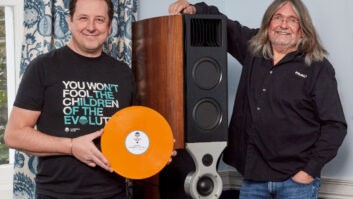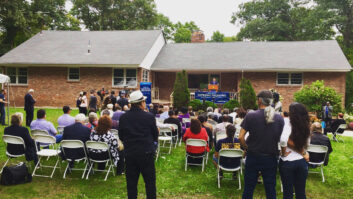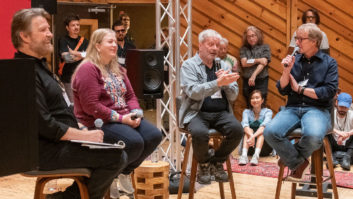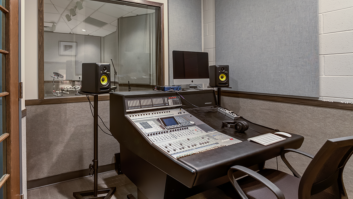Live music has always brought people together, and for the last 100 years or so, recorded music has done that, too—people gathered around stereos to listen to songs, studios inevitably fostered creative communities, and there were plenty of indie replication plants making LPs, CDs and tapes that considered their staffs to be family.
A lot of those traditions seem to be falling by the wayside now—today, people plug their ears with Bluetooth earphones and listen to music alone; numerous high-profile studios have shuttered; and two decades after Napster turned an entire generation into music pirates, the same thing has happened to replicators as well.
The value of community, however, hasn’t changed, and in some areas, rescuing historic recording studios is being seen as a way to bring people together and forge new communities for the future.
In the 1970s, Macon, Georgia was the home of Capricorn Records, the indie label behind the Allman Brothers Band, the Marshall Tucker Band, the Outlaws and others until it went bankrupt in 1979. In the decades since, the label’s offices/studio building deteriorated to the point where it was condemned and dangerously close to collapsing.
Now the facility is getting a new lease on life as Macon, Mercer University and housing developers have radically reinvented the building as The Lofts at Capricorn, a mixed-use facility nearing completion. The site will house apartments; more than a dozen 24/7 rehearsal rooms for musicians; a museum detailing the region’s musical history; office space for local non-profit arts organizations; a performance area; and the center point of the ready-made community—Capricorn Studio, restored and open for business. While Mercer’s music school will occasionally hold classes there, the site is intended to be a working studio offering both analog and digital recording for local musicians. Some fundraising remains, but stakeholders expect the project to be completed in 2019—the 50th anniversary of Capricorn Records.
Looking north to New Jersey, another site crucial to the history of recorded music is on the verge of reinvention. Founded in 1901, The Victor Talking Machine Company in Camden grew over the years to fill two-dozen buildings across 10 city blocks as it manufactured record players, accessories and a whopping 800,000 records a day. Few signs of that empire exist today, however, and Victor’s main eight-story office building near the city’s waterfront has sat barely used by its owner, the school district.
Exhibiting at the 2018 NAB Show? Enter the NewBay Best of Show Awards!
Now developers have purchased the edifice and envision a renovated, modern-day office space that will invoke its musical past. Tentative plans call for the eighth-floor recording studio—where the likes of Nat King Cole, Louis Armstrong, Duke Ellington and Billie Holiday reportedly cut sides—to be redeveloped and possibly joined by a video production facility. Other possibilities include a roof-based restaurant offering views of Philadelphia across the river; first-floor shops; a performance space; and more. The result is a developer using the cache of musical heritage and a historic studio to attract business tenants and infuse the site with a sense of unique community going forward.
The future is also what some groups have in mind with their efforts to save the former home of King Records in Cincinnati. Founded in 1943, King grew to be the nation’s sixth-largest label until fading in the 1970s, and over the years, plenty of top acts recorded for King, from Petula Clark to James Brown. At press time, the Cincinnati Planning Commission looks to be arranging a land swap with the vacant building’s owners, Dynamic Industries, which wants to demolish it. If successful, and ensuing funds can be raised, three non-profits have proposed an ambitious renovation that would include a performance hall, museum and restored recording studio—all of which would help bring visitors to a community that is increasingly revitalized after decades of urban blight.
By looking back and respecting the importance of both recording history and creative communities, these redevelopment projects are finding ways to use historic studios as catalysts to create new visions of the future.




